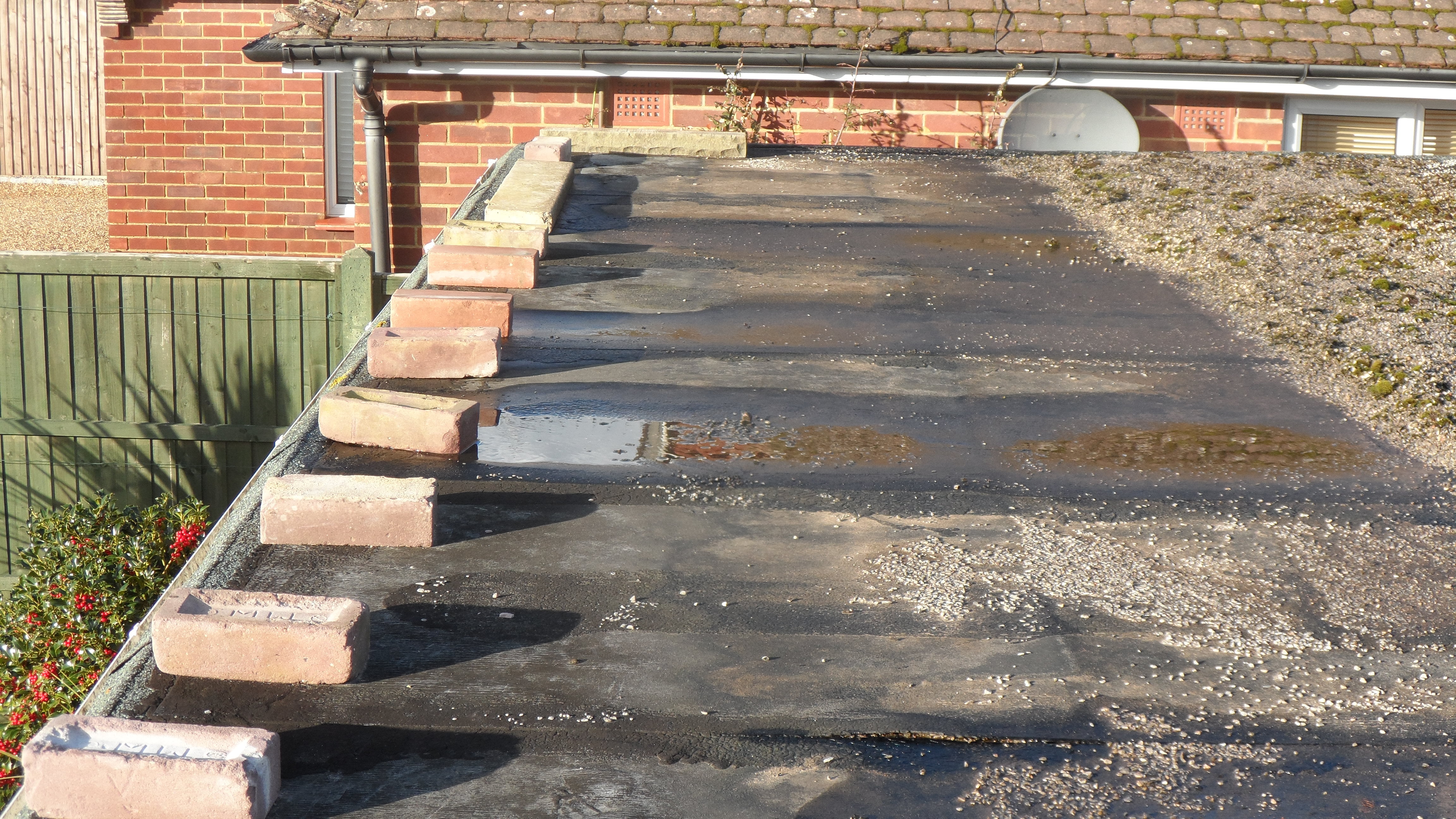Flat Roofs
Flat Roofs
Flat roofing has always had a bad reputation; some surveyors say deservedly so. The defects are normally due to poor workmanship or poor quality of the materials used in flat roofing. Even though they are called ‘flat roofs’, they are in fact pitched, normally below 10 degrees, to allow rainwater to drain from the surface.
Some insurers will expect a professional to inspect a flat roof every 5 years and produce a report about its condition. This is worth bearing in mind! The older styles of built-up felt have limited lifespans (of say, 15 years) due to the degradation of the covering caused by the UV rays in sunlight. Again, some insurers will have specific exclusions as to any loss or damage caused by the failure of a flat felt roof that is 10 years old or more.
What is the covering made of?
If possible, try to ascertain what the flat roof is covered with. During your viewing, often a window will give you a good view of a single storey flat roof. If it is two storeys, unless you can see from some other vantage point, a mast camera becomes essential. A specialist roof survey may be required by some Insurers and mortgage companies. The “drips”, the pieces that overlap the edge of the roof,will also give you a good idea of the material.
Older types of flat roof
It would be normal for older type of felt roofs to be constructed from three layers a felt stuck together with hot bitumen to then be covered in “chippings” or small pieces of gravel. This is important as it shields the vulnerable felt from the sun’s rays. There should be a complete covering without missing patches.
Sometimes flat roofing can appear silver. If so, it has been painted with a solar reflective paint. If it appears to have been painted grey, possibly a reinforced type paint has been applied over an already failing roof covering. This suggests a very limited lifespan.
In the past, metal has been used for high performance flat roofs. Although expensive to fit, it tends to have a good life when well installed. Look for any tell-tale discolouration, such as brown staining from the use of cast lead as opposed to milled lead.
When zinc, lighter silvery coloured metal, has been used, be wary. These do not benefit from the same longevity as lead, often because the cheaper materials attract less skilled installers. Such roofs also suffer from corrosion from the atmosphere.
More modern types of flat roof
More modern fibreglass style roofs are normally lighter grey in colour and appear to be constructed from a single piece with no obvious over-laps or raised seams. These would normally come guaranteed for 20 years or so; ask the vendor or agent if it has a guarantee.
The most recent form of flat roof covering is of EDPM rubber membrane. These high performance roof coverings are laid in relatively few strips with the seams being almost flat as the rubber is about 1mm in thickness. They are normally fitted by the manufacturer’s approved installers and come with insurance backed guarantees. Again, a quick question can put your mind at rest.
One of the most common issues with flat roofing is ponding. Rain water creates ponds on the surface because the roof coverings not able to drain properly. The weight of water usually causes premature failure. For fibreglass roofs, a certain degree of ponding is acceptable but not desirable. Even if it is not raining,any ponding should still be visible as it leaves tell-tale darker patches. Significant moss growth on the surface is another flag that the covering is not draining well.
For most roofing materials, ponding indicates that the supporting decking beneath is not laid to correct falls or has been damaged by internal condensation. Problems with the decking normally means it is not just the covering that needs replacing but also the decking itself, adding more expense to the job but can provide an opportunity to improve insulation.

